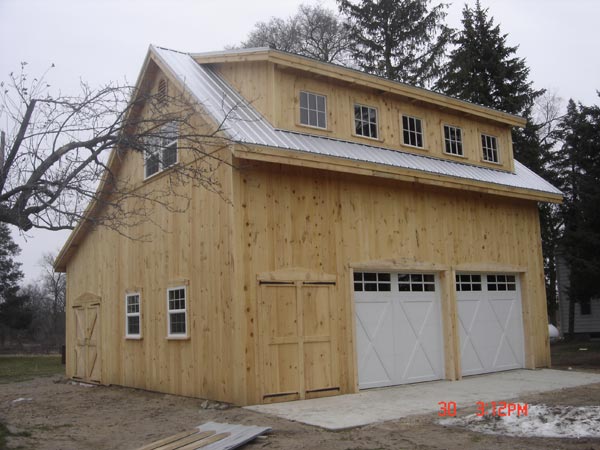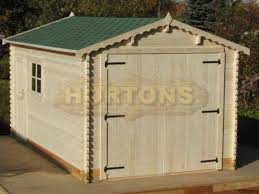
It's not easy to live in a garage. A garage isn't a safe place to live in and it can be dangerous. Pests are one of the greatest risks. Garages are a magnet for pests. They are quiet, dark and shaded which attract rodents as well as insects. Garages can be accessed easily. They can easily access the building from their cars.
Some of these creatures can pose danger to pets and owners. Muskrats, for instance, can be aggressive. They can cause seepage problems. If you cannot get rid them, they can inflict damage on your plants as well as spread rabies and other disease. Keep hazardous chemicals out your garage, too.
An additional risk is a garage that is not well insulated. You may also have problems if the temperature drops. This is when you need to keep the floors warm. The best solution is to install garage heating systems. A second floor apartment can be created.
Garages are a popular choice for many reasons. It is often because it is convenient. Garages are easy to access, making it possible for people to move around the building. This space can also be used as a storage area.

The garage can be a good place to shelter from the elements but there are also other dangers. A building permit is required if the garage is to be used as an apartment. The conversion can also be complicated due to zoning laws.
Most communities will have restrictions on the type of living space you can build. If you are planning to convert a garage into a living space, you should contact your local alderman to discuss the regulations.
Before you make any major changes to the property, consult with your agent. It's important that you keep your taxes up to date and pay the right insurance premiums. Major changes to your risk profile can make it more difficult to insure your house. Your house's resale value can be affected by adding an additional bedroom.
Even though the garage is a great shelter from the weather, it can still be a breeding ground for various types of pests. Depending on your area, you could have a variety of different bugs, including spiders, raccoons, ants, and rats.
Make sure your neighborhood is clean before you convert your garage to a living area. If you suspect that there is a problem with a neighbor's garage, you should file a complaint with the local housing authority. You will find your name on the complaint form.

People have been known for sleeping in their cars and using kerosene to heat their homes. Be careful with these appliances. Also, your car may be broken into.
Safety is paramount. You must ensure that your children are not exposed to dangerous chemicals if you have them. Also, make sure they are away from any boxes, wires, or other items.
FAQ
What is the difference in a remodel and a renovaton?
A remodel is a major change to a room or part of a room. A renovation involves minor changes to a specific room or part of it. Remodeling a bathroom is a major job, but adding a faucet to the sink is a minor one.
Remodeling involves the complete or partial renovation of a room. A renovation is only changing something about a room or a part. A kitchen remodel might include the replacement of countertops, sinks as well as appliances, lighting, and other accessories. However, a kitchen renovation could include changing the color of the wall or installing a light fixture.
How long does it take to remodel a bathroom?
Two weeks typically is required to remodel a bathroom. This can vary depending on how large the job is. Some jobs, such installing a vanity and adding a shower stall, can take only a couple of days. Larger projects such as removing walls, laying tile floors, or installing plumbing fixtures may require several days.
As a general rule, you should allow at least three days for each bedroom. For example, if you have four bathrooms you would need twelve days.
What are the most expensive expenses for remodeling a kitchen.
Planning a kitchen renovation can be costly. These include demolition, design fees, permits, materials, contractors, etc. These costs seem small when you look at them individually. They quickly grow when added together.
Demolition is the most costly cost. This includes the removal of old cabinets, countertops, flooring, and appliances. The drywall and insulation must then be removed. You will then need to replace them with new items.
You will need to hire an architect for plans. To ensure your project is compliant with building codes, you will need to pay permits. The final step is to find someone to carry out the actual construction.
Once the job has been finished, you need to pay the contractor. All told, you could spend anywhere between $20,000 and $50,000 depending on how big the job is. Before hiring a contractor, it is vital to get estimates from multiple people.
Plan ahead to cut down on some of these costs. You might get better deals on materials and even save some time. It is possible to save money and time by knowing what to do.
Many people will attempt to install their cabinets themselves. This will save them money as they won't need to hire professional installation services. Problem is, they often spend more time trying to place the cabinets themselves. A professional will usually finish a job in half as much time as you would.
You can save money by buying unfinished materials. You must wait until the cabinets are fully assembled before purchasing pre-finished material. You can use unfinished materials immediately if you buy them. Even if it doesn't go according to plan, you can always change your mind later.
Sometimes, however, it's not worth all the effort. Plan is the best way to save on home improvements.
Why should I remodel rather than buying a completely new house?
It's true that houses get cheaper yearly, but you're still paying for the same square footage. You will pay more for the extra square footage, even though you might get more bang for you buck.
It's cheaper to maintain a house without much maintenance.
Remodeling can save you thousands over buying a new house.
Remodeling your current home can help you create a unique space that suits the way you live. Your home can be made more comfortable for your family.
Do you think it is cheaper to remodel a kitchen or a bathroom?
Remodeling your bathroom or kitchen is expensive. However, when you consider how much money you pay each month for energy bills, upgrading your home might make more sense.
You could save thousands each year by making a small upgrade. A few small changes, such adding insulation to walls or ceilings, can cut down on heating and cooling costs. Even a modest addition can improve comfort and increase resale value.
It is essential to remember that renovations should be done with durable, easy-to-maintain materials. The durability and ease of maintenance that porcelain tile and stainless steel appliances offer over vinyl and laminate countertops is why solid wood flooring and porcelain tile are so much better.
Altering old fixtures can also help reduce utility bills. Installing low-flow faucets or showerheads can cut water use by up to 50%. Up to 75 percent of electricity can be saved by replacing inefficient lighting fixtures with compact fluorescent bulbs.
Are you able to spend $30000 on a kitchen renovation?
A kitchen remodel costs anywhere from $15000 up to $35000 depending on what you are looking for. If you want a complete kitchen overhaul, expect to pay more than $20,000. You can get a complete kitchen overhaul for as little as $3000 if you just want to replace the countertops or update your appliances.
The average price for a full-scale renovation is usually between $12,000-$25,000. However, there are ways to save without sacrificing quality. An example is to install a new sink rather than replacing an existing one that costs around $1000. You can even buy used appliances for half of the price of new.
Kitchen renovations are more time-consuming than other types of projects. Plan accordingly. It is not a good idea to begin work in your kitchen and realize that you will run out of time.
Your best bet is to get started early. Begin looking at the options and getting quotes from different contractors. Then narrow your choices based price, availability, quality, or both.
Once you have contacted a few contractors, ask them for estimates and then compare prices. The lowest-priced bid isn't always the best choice. It is important to find someone who has similar work experience and will give you a detailed estimate.
Make sure you include all extras in your final cost calculation. These could include labor costs, permits, and material charges. Be realistic about how much you can afford and stick with your budget.
If you're unhappy with any of the bids, be honest. You can tell the contractor why the first quote isn't what you want and get another one. Don't let your pride prevent you from saving money.
Statistics
- 55%Universal average cost: $38,813Additional home value: $22,475Return on investment: 58%Mid-range average cost: $24,424Additional home value: $14,671Return on investment: (rocketmortgage.com)
- bathroom5%Siding3 – 5%Windows3 – 4%Patio or backyard2 – (rocketmortgage.com)
- Attic or basement 10 – 15% (rocketmortgage.com)
- Following the effects of COVID-19, homeowners spent 48% less on their renovation costs than before the pandemic 1 2 (rocketmortgage.com)
- $320,976Additional home value: $152,996Return on investment: 48%Mid-range average cost: $156,741Additional home value: $85,672Return on investment: (rocketmortgage.com)
External Links
How To
How to Install Porch Flooring
Although installing porch flooring can be done easily, it is not without some planning. Laying a concrete slab is the best way to install porch flooring. If you don't have a concrete slab to lay the porch flooring, you can use a plywood deck board. This allows you to install the porch flooring without making an expensive investment in a concrete slab.
When installing porch flooring, the first step is to secure the plywood subfloor. Measure the width of your porch to determine the size of the plywood strips. These strips should be placed along both sides of the porch. Next, nail them into place and attach them to the walls.
After attaching the subfloor to the surface, prepare the area where the porch flooring will be installed. This typically involves cutting the top layer of floorboards to the desired size. Then, you must apply a finish to the porch flooring. A polyurethane is a common finish. It is possible to stain porch flooring. Staining is more straightforward than applying a coat of clear paint. After applying the final coat, you just need to sand down the stained areas.
Now you are ready to put in the porch flooring. Next, mark the spot for your porch flooring. Next, measure the porch flooring and cut it to size. Then, fix the porch flooring to its place using nails.
If you need to give your porch more stability, porch stairs can be installed. Porch stairs are often made from hardwood. Some people prefer to install their porch stairways before installing their porch flooring.
Once your porch flooring is installed, it is time for the final touches. You will first need to remove the porch flooring, and then replace it with a brand new one. Next, clean up all debris. Make sure to clean up any dirt and dust around your home.